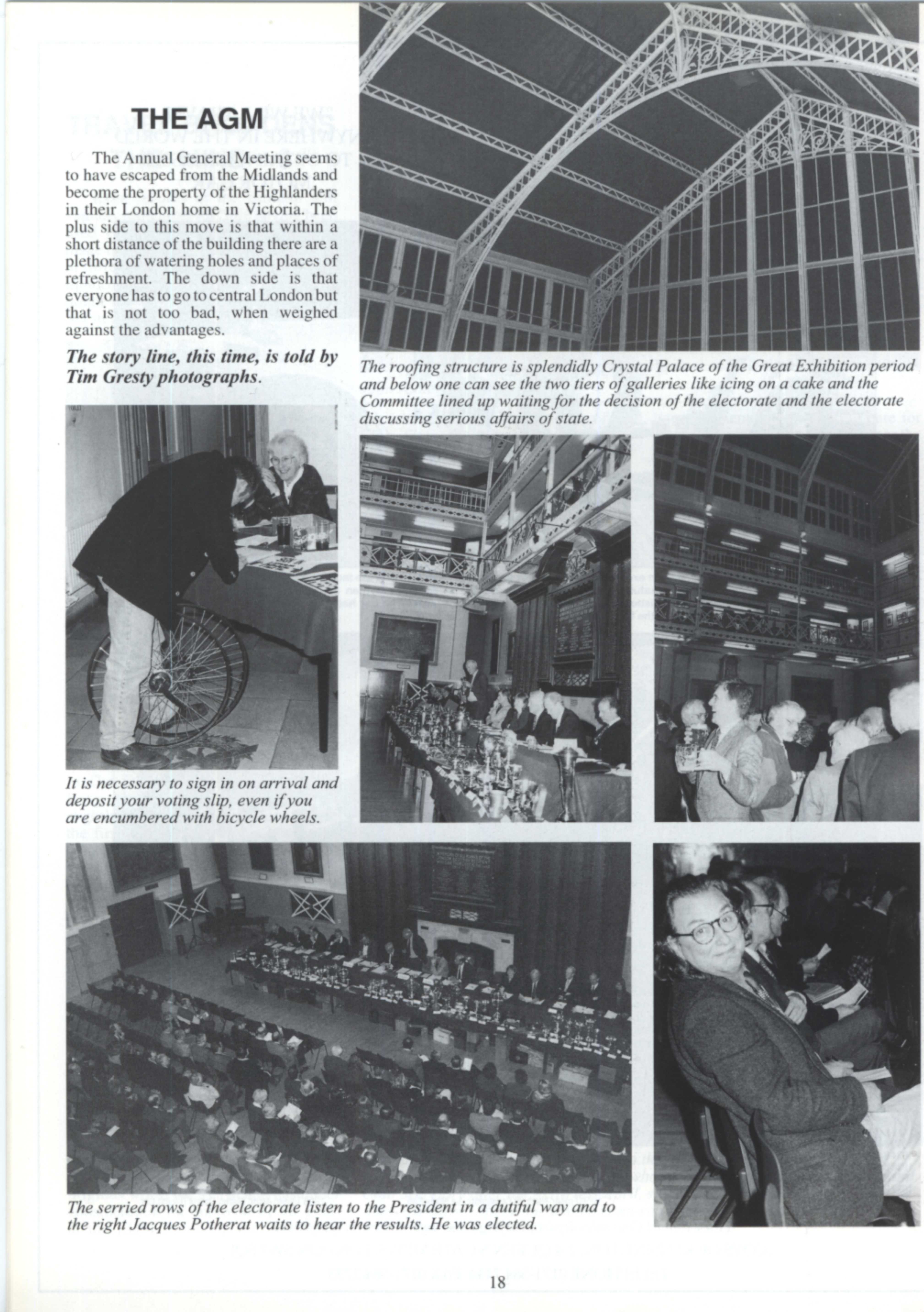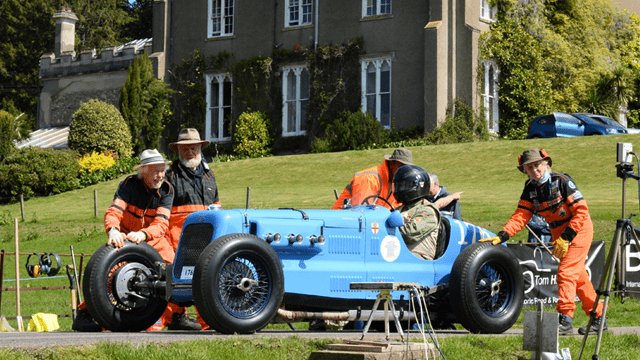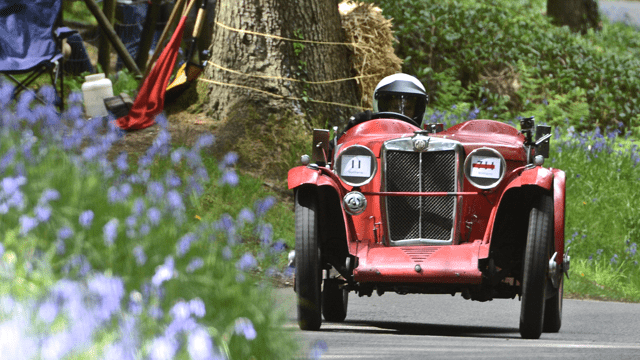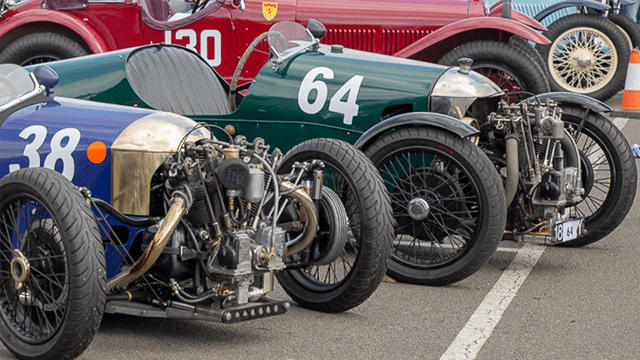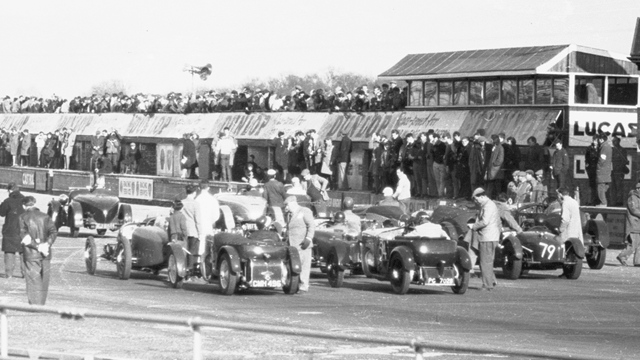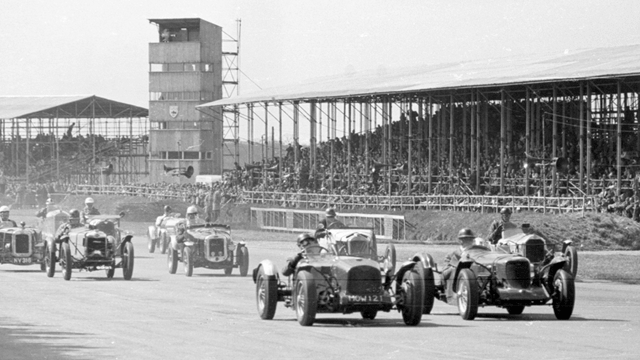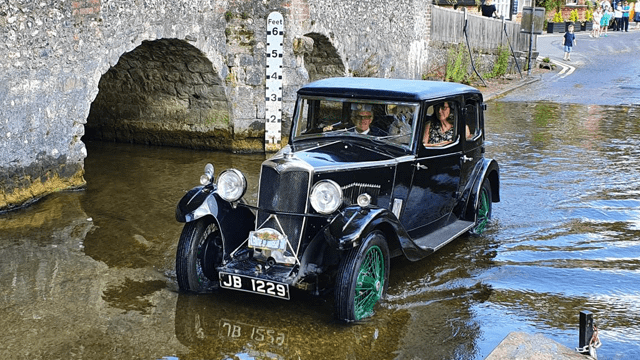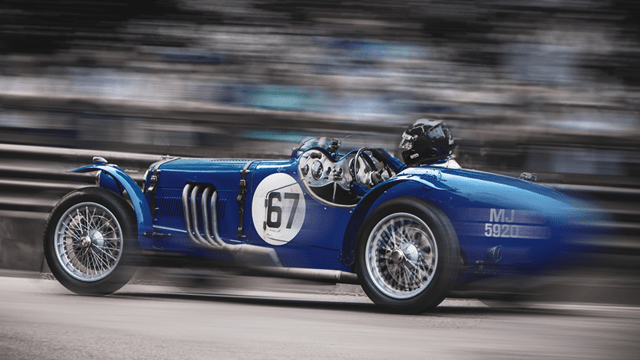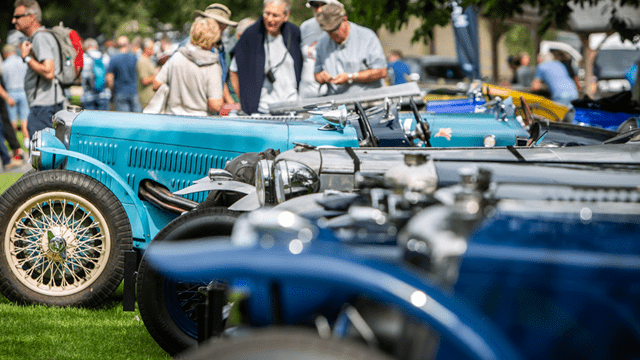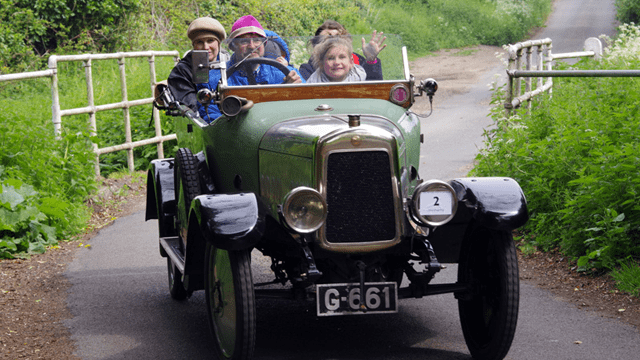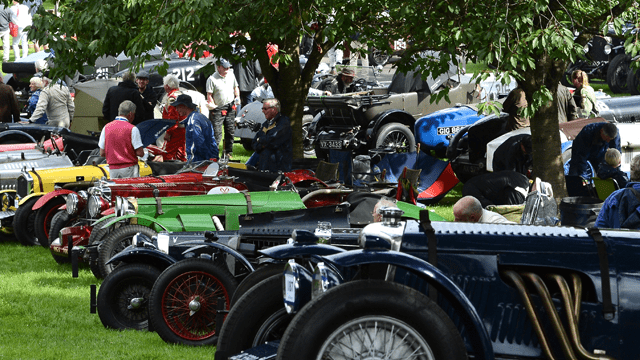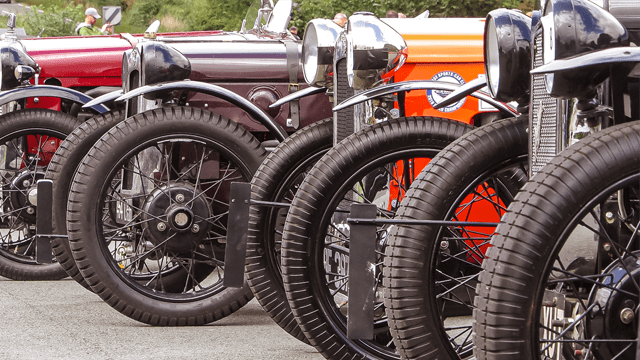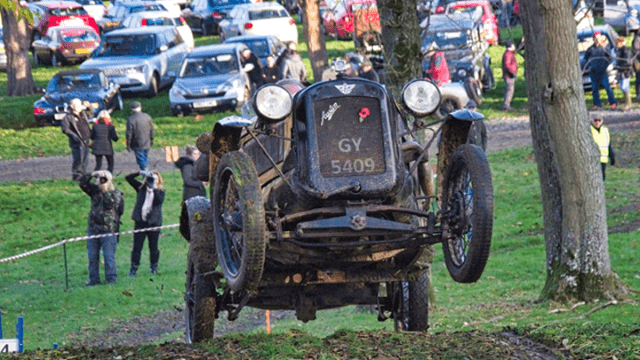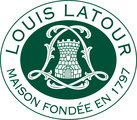History
The Formation of the Club
 The formation of the Veteran Sports-Car Club, in October 1934, attempted to keep active the machinery of the era by only accepting cars that were five years old, or more. Rule 2 of the newly formed club said that The objects (sic) of the Club shall be:- to provide competitive events for cars five years old or more and social events for members. The intention at this time was merely to ensure a car was of a certain age before being accepted for competition rather than to set a fixed date in history after which a car would not be accepted. At its second meeting in early November 1934, the Committee of the Veteran Sports-Car Club resolved that the name of the Club must be changed because it was too easily confused with the Veteran Car Club, who had complained; at the third meeting later that same November the Club formally amended Rule 1 and changed its name to The Vintage Sports-Car Club.
The formation of the Veteran Sports-Car Club, in October 1934, attempted to keep active the machinery of the era by only accepting cars that were five years old, or more. Rule 2 of the newly formed club said that The objects (sic) of the Club shall be:- to provide competitive events for cars five years old or more and social events for members. The intention at this time was merely to ensure a car was of a certain age before being accepted for competition rather than to set a fixed date in history after which a car would not be accepted. At its second meeting in early November 1934, the Committee of the Veteran Sports-Car Club resolved that the name of the Club must be changed because it was too easily confused with the Veteran Car Club, who had complained; at the third meeting later that same November the Club formally amended Rule 1 and changed its name to The Vintage Sports-Car Club.
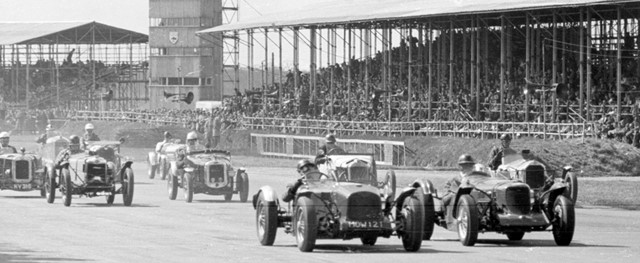
Age of Cars deemed 'Vintage'
The question of the age of eligible cars is one which proved to be pivotal to the continuing history of the Club. Initially it was intended that the five-year-old rule would be on a rolling date basis and that in, say, 1937 a 1932 car would be allowed to compete. However it did not take long for this to change. At the Annual General Meeting in January 1936 the Captain, Tim Carson proposed that “During 1936, driving membership of the Club should be limited to owners of cars manufactured prior to 31st Dec 1930”. He went on to suggest that unless the membership numbers declined, the limit should be kept at 31 December 1930. Press Secretary Cecil (Sam) Clutton said that he favoured 1930 as the limit year because it marked a definite period in motor car manufacture and that from 1930 onwards a new type of [mass produced] sports-car had become popular, a type which was not particularly desired in the Club. One member complained that if the proposed alteration to the rules were carried, the cars in the Club would eventually become so old that they would disintegrate and that if a later date were not subsequently adopted the membership of the Club would decrease. Captain A W Phillips of the Royal Automobile Club, even then the rule makers of motor sport, was not present but was quoted as saying that he considered it absolutely essential for the well-being of the Club that the year of eligibility for driving membership should not be advanced. There was further debate around the subject before a vote was taken which resulted in 23 – 5 votes in favour of keeping the date at 31 December 1930 and thus establishing the identity of the Club as it was then and as it still exists today.
The First Events
It didn’t take long for the Club to begin to run competitive events and this set in train the debate on another key element which helped to define the Club and which was embedded in its very title: what was a sports car? In drafting the Supplementary Regulations for the 1935 August Speed Trials it was determined that there would be both sports and racing classes, sports cars to be fitted with wings, lamps, hood, spare wheel, windscreen, battery and dynamo and to use a fuel generally obtainable by the public. By default a racing car did not need to have all of these attributes although no doubt some would feature some of them. So it was clear from the very early days that despite its name the Club would be pleased to see racing cars in competition at its speed events. Even today, a racing car is defined by the Club as one built for speed events or sports cars running without the equipment required to qualify as a sports cars – ‘stripped’ in the modern vernacular. The definition of a sports car has changed very little but now specifies that there must be two seats, an efficient silencer and a reverse gear. VSCC Speed events still run classes for both sports and racing cars.The competition profile of the Club accelerated better than some of the cars. Early outings in late 1934 included a run out to watch what was quaintly described as the ‘Old Crocks’ event, or what we now know as The London to Brighton Run, followed by a ‘Scavenge Hunt’ in December. The Club soon sought permits from the RAC and in January 1935 held its first competitive event, a trial in the Chilterns. In February 1935 it was decided that an annual calendar should include 5 trials, 2 speed events and 2 social events. The first speed event was held at the Howard Park Hotel in Aston Clinton in August 1935 and by mid 1936 the Club included classes for ‘Veteran’ cars “to be built prior to Dec 31 1914” in its speed events, later extended to 1918. Classes for Edwardian cars are still included in the Club’s speed and racing events. The Club’s first race meeting, organised in conjunction with the Bugatti Owners’ Club, took place at Donington Park on 10 July 1937. It included 10 races with Bugattis and Bentleys figuring prominently in the results. The first Prescott Speed Hill Climb took place in 1938 and the first Welsh Rally and Trial in 1939 and so completed the foundations for a comprehensive range of sporting and social events catering for pre-1931 cars and their owners. At the outbreak of war in 1939 VSCC membership was approximately 300.
The War Years
Clearly the war years interrupted the ever widening activities of the Club but it has gone on to become one of the most established and significant car clubs anywhere in the world. The first VSCC ‘Rally’ after the war was a social event held at Bagshot on 15 September 1945, where the momentous decision was made to extend driving membership “to any person owning a car (of whatever make or year of manufacture) that is found acceptable to the Committee”. These cars were thenceforth named Post Vintage Thoroughbreds or PVT. The first Post-war competitive event was the Marlow Trial on 3 February 1946, and on Easter Monday the Elstree Speed Trials were held over a quarter mile of slightly uphill aerodrome runway near London. As this was the first big speed event to be held in the country after six years of war there was a huge entry and an estimated crowd of twelve to fifteen thousand spectators. With competitors running in pairs, the meeting went on for six and a half hours and there was a picture of it in The Times.Resuming Activities in the Post War Years
1947 saw the VSCC, with the Cambridge University Automobile Club, running the only motor race meeting of the year on mainland Britain, the only other meetings being races of approximately 150 miles in the Isle of Man, Ulster and Jersey. The venue was the disused aerodrome at Gransden Lodge, near Cambridge, and it must have been one of the finest hours for both the VSCC and the CUAC. All the other speed events on mainland Britain that year were hill climbs and sprints. This year also saw the inauguration of the Midland Section, which organised its first Madresfield Court Rally and Tests, while the first Measham Rally came in 1950, both events being held annually to this day. In April, 1949, the VSCC held the first Club meeting at the new Silverstone circuit, a sprint up one of the runways, followed by a full race meeting in July.There has been a steady growth in membership and the level of activities ever since, and the Club currently has around 6,000 members and runs over thirty five competitive events annually.
The VSCC AGM 1998
